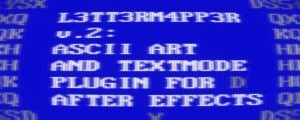GPUResize
-
Compatibility After Effects Please check exact version compatibility under the "COMPATIBILITY" tab below
-
Compatibility Premiere Please check exact version compatibility under the "COMPATIBILITY" tab below
GPUResize is a GPU accelerated plugin for Adobe After Effects and Adobe Premiere with realtime performance and advanced image interpolation abilities that are missing natively.
We believe that there’s no such thing as one and only perfect image scaling algorithm - instead, we are introducing several different ones, that allow you to make the best choice for your footage.
Use cases of GPUResize aren’t only limited to simple SD to HD video upscaling, but instead could vary from pixel-sharp upscaling of animated pixel art to downscaling your 4k and 8k camera footages while keeping the most detail possible.
Interpolation filters
- Nearest (pixel-exact)
Performs nearest neighbor image scaling. It is similar to ‘Draft’ layer quality setting in After Effects, excepting you don’t have to care about layer quality setting anymore, it will always keep your pixels sharp. It could be used for upscaling of pixel art and ’gif style’ animations. - Bilinear (cheap, classic)
Performs bilinear image scaling (same as Best layer quality in all versions of After Effects prior to CC). - Triangle (cubic, smooth, triangle shaped)
Cubic triangle filter, the weighting decreases with increasing distance from the pixel. It provides slightly better, yet smoother results than the usual bilinear filter. - Bell (cubic, smooth, bell shaped)
Smooth cubic filter with Bell-curve. - B-Spline (smooth spline filter)
This cubic filter uses B-spline interpolating functions instead of classic cubic splines, which in general yield quite smooth results. - Catmull-Rom (cubic, very sharp)
Sharpening cubic filter with Catmull-Rom spline interpolation. - Mitchell (cubic, neutral)
Mitchell-Netravali's separable cubic filter, good for downsampling real-world images. Very precise filter without blurring yet without much ringing/sharpening. - Lanzcos3/Lanzcos4/Lanzcos6 (HiQ, sharp)
Lanzcos (pronounced "LAHN-tsosh") is named after a Hungarian mathematician and probably the best filter in terms of detail preservation and sharpness while resampling ‘usual’ real-world images. Lanzcos3/Lanzcos4/Lanzcos6 are performing filtering with the size of the window equal to 3,4 and 6 pixels respectively. - Kaiser (HiQ, smooth)
Kaiser-Bessel window filter; very good results, but smoother than Lanzcos.
Multipass options
- Multipass downscale
Does exactly what it says on the tin. Mipmap style filtering, use it for big downsampling ratios (more than 2 times).
- (NEW) Stairstep upscale
Added by popular demand; interpolating multiple times in small increments until the goal size is reached; you can use it with any interpolation filter, but prepare to wait a bit, when you’ll be upscaling from 512x to 8k using complex filters like Kaiser/Lanzcos with this option. Generally we would advise to try it also with simpler cubic image filters - such combo can just shine when used with several complex image types.
Known issues
Turn off OpenGL, if you’re using AE CS5/CS5.5 on OSX
If you are using older version of After Effects (CS5/CS5.5) on OSX, we would recommend turning OpenGL off in Edit>Preferences under the Preview tab, if you are getting an OpenGL related errors while using the plugin (and you most probably WILL experience such errors).
Keep your scale 100%
Be sure you’re not changing the scale of your footage/composition after the GPUResized did the job. Otherwise the host will attempt to apply its own interpolation algorithms on top of the output of GPUResize, which will make the plugin’s work redundant.
| After Effects | CC 2015, CC 2014, CC, CS6, CS5.5, CS5 |
|---|---|
| Premiere | CC 2015, CC 2014, CC, CS6, CS5.5, CS5 |
1.2 (Current version) - Jun 23, 2015
1.1 - Jan 16, 2015
1.0.1 - Oct 12, 2014
- automatic Premiere composition size (doesn't work in CS5)
- proper adaptive resolution handling in custom size mode

 Adding to cart...
Adding to cart... 












